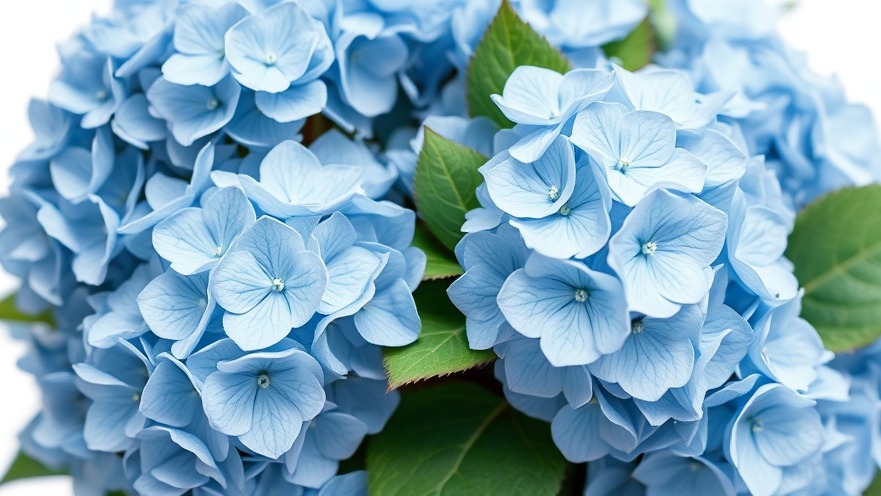
The Truth Behind Baking Soda and Hydrangeas
Hydrangeas are not only floral delights; they also enchant gardeners with their remarkable capacity to morph their colors based on soil chemistry. For eco-conscious homeowners yearning for vibrant blue blooms, the question often arises: can everyday items like baking soda and coffee grounds truly shift the soil pH necessary to turn hydrangeas blue? Here’s what garden experts have to say about these common kitchen remedies.
Myth-Busting Baking Soda
Many believe that adding baking soda could be a quick fix for improving soil conditions. However, as experts agree, baking soda, scientifically known as sodium bicarbonate, is actually alkaline. This means that rather than acidifying the soil—something essential for unlocking the aluminum ions that blue hydrangeas crave—it would do the opposite. Baking soda could inadvertently shift soil conditions toward alkalinity, further preventing that beautiful blue burst.
Why Not Baking Soda for Soil pH?
Gardeners often wish for quick fixes when caring for their plants, but baking soda’s long-term effects can be detrimental. The accumulation of salt in the soil can stifle plant health over time. Instead of reaching for baking soda, experts recommend a soil test followed by the application of products like aluminum sulfate or sulfur, which develop the acidic conditions that lead to blue flowers. Foods that work, such as coffee grounds, are also often cited, but their effect varies greatly.
Understanding Soil pH: The Key to Hydrangea Colors
Many eco-conscious brands and garden experts echo the importance of understanding soil pH for those keen on cultivating blue hydrangeas. The general rule is that the more acidic the soil, ideally below a pH of 6, the more likely the hydrangea will produce those eye-catching blue blooms. The key factor here is aluminum, which plants can only access in acidic environments.
Alternative Natural Practices for Acidifying Soil
For eco-friendly gardening enthusiasts, there are many natural and sustainable methods to enhance soil acidity without resorting to ineffective quick fixes. Composting with coffee grounds, incorporating pine needles, or using organic mulch can contribute to gradually acidifying soil while improving its structure and fertility. These practices not only nurture the plants but also promote healthy ecosystems in your garden.
The Role of Regular Soil Testing
A critical element of responsible gardening is conducting regular soil tests. This provides a clear understanding of current pH levels and nutrient content. By knowing your soil's condition, you can amend it effectively and avoid unnecessary treatments that may harm your hydrangeas or other plants. Many local extension offices offer soil testing at little or no cost, providing invaluable insights for gardeners.
Eco-Friendly Strategies Beyond Hydrangeas
Looking at the bigger picture of eco-conscious gardening involves integrating strategies that promote sustainability and conservation. Simple steps such as rainwater collection, practicing water conservation in gardening, and implementing natural landscaping ideas can create a flourishing environment for various plants, including hydrangeas. Such approaches reduce water use and improve soil health over time.
Conclusion: Embrace What Works for Your Garden
Ultimately, understanding the science behind soil pH and plant health allows you to make informed decisions about your garden. Shelving the myths surrounding baking soda in favor of proven methods will enable you to cherish the vibrant blooms of hydrangeas and ensure that your gardening efforts contribute positively to the earth. Dive into these eco-friendly gardening practices, and help cultivate a greener planet!
 Add Row
Add Row  Add
Add 




Write A Comment